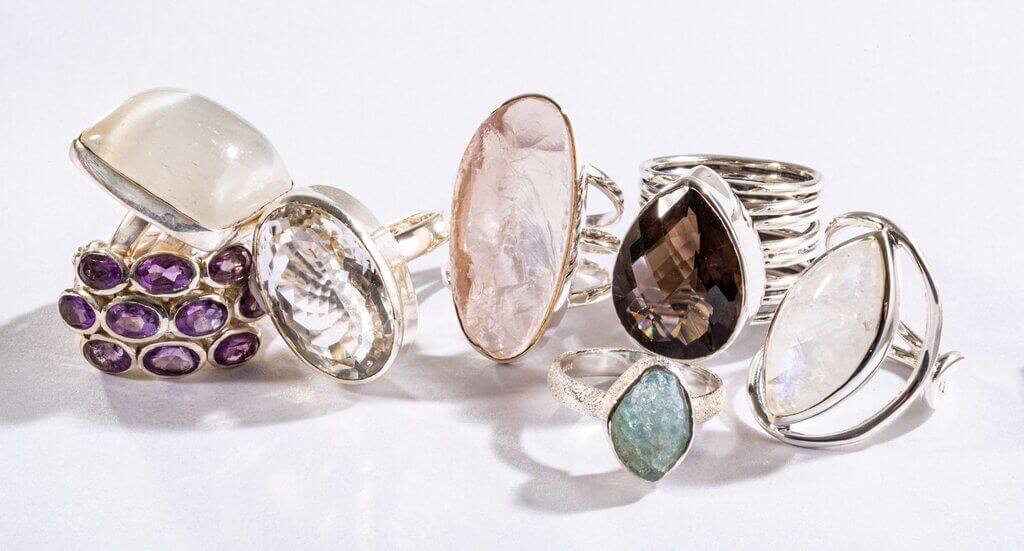Every year, retailers sell over 100 million diamonds across the United States, yet most buyers aren’t aware of the quality of the diamond they’re buying, and how it’s valued. The 4Cs stand for the four significant variables used in judging the value and quality of a diamond. Both cut and rough diamonds are categorized and graded using the 4Cs. As a buyer, the first step to take when shopping for a diamond involves understanding the 4 C’s diamond grading formula.
There was no approved standard for grading diamonds until the mid-20th century. GIA invented the first, and now universally accepted criteria for categorizing diamonds: Color, Clarity, Cut as well as Carat Weight. The invention of 4Cs guaranteed two essential things: customers purchasing the diamond could know precisely what it is they’re paying for, and diamond quality could be translated in a global language.

As the inventor of Diamond’s 4Cs and the Universal Diamond Grading System, GIA (Gemological Institute of America) isn’t only a global authority, but also the world’s most reliable source for an independent assessment.
Cut
When assessing the diamond’s quality, the evaluators regard ‘Cut’ as the most significant of the 4Cs. The shape of the original rough stone, weight’s preservation, location of the flaws and inclusions, and popularity of specific shapes determines how a diamond is cut. Do not confuse the cut of a diamond with its shape. Shape signifies the diamond’s outer appearance, and how it’s faceted.
Whenever a diamond has an ideal cut, incident light enters it via the table and crown and travels towards the pavilion. Here, it reflects from side to side and then bounces back to the eyes of the observer. This feature affects the diamond’s brilliance, dispersion, and brightness.
Carat
A diamond’s carat shows its size and weight. A single unit of a carat is equivalent to 0.007 ounce or 0.2 grams. It’s possible to divide a carat into points, where one carat equals 100 points, and every point weighs 2 milligrams. Thus, a 2-carat diamond is 200 points, ¾ carat is 75 points, and ½ carat is worth 50 points.
According to Federal Trade Commission (FTC), the diamond’s weight needs to be defined in decimal parts of a carat, and the figure must be precise to the very last decimal. For example, if a carat weight is 0.30, it could represent a diamond that weighs between 0.295 and 0.304 carats. Carat weight written as one decimal place needs to be accurate up to the second decimal place.

Clarity
Clarity denotes the presence or absence of negligible flaws within the stone, inclusions. As a buyer, it’s essential to understand and learn about the clarity designations of the 4Cs diamond grading system. When it comes to ‘colorless’ diamonds, dark inclusions tend to make it rank lower in the clarity grade. Regarding fancy-colored diamonds, pale or light flaws may indicate greater relief, and this causes a considerable drop in the grading system.
Color
Almost all-natural diamonds comprise small nitrogen quantities that displace the carbon atoms found within the diamond’s structure. Since the nitrogen impurities are lightly spread throughout the stone, it absorbs the blue spectrum, which makes the diamond appear yellow. A high presence of nitrogen means that a diamond will appear more yellow in its hue.
In defining a diamond’s color rate, the GIA uses a scale of D to Z. D represents total colorless, while Z represents yellow. Color rating is performed under precise conditions, and regulated lighting since the difference between one shade and another is very elusive.
When searching for a diamond, the human eye notices a balance of its components and characteristics, including, but not restricted to, the 4Cs. All the 4Cs are graded on a scale and assessed for quality. Although some global grading and terminologies exist, it usually varies.

The most recommended diamond to buy is that which has a certificate from AGS and GIA. These diamond certification organizations give a detailed report on everything about a stone in regard to its cut, color, carat weight, and clarity. Visit the Pricescope diamond color guide to get more in-depth and unbiased information about diamond quality and grading.
Explore further:-



